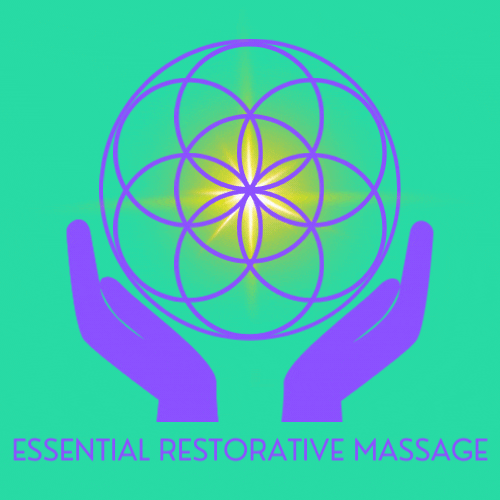About Remedial Massage
Remedial massage is a manual soft tissue therapy that is used to reduce pain and restore function to your muscles, aiming to trace the discomfort to the original source. It can assist in recovery from muscular injury, overuse of muscles and muscular tension.
Why choose Bella as your Remedial Massage Therapist?
Bella aims to locate the source of the issue and restore function to muscles, all the while working to relax the nervous system to release tension and therefore eliminate/reduce pain.
The massage may be gentle or strong, shallow or deep and Bella has amazing flow so you can expect a remedial massage that is also calming for the nervous system.
A combination of massage techniques are used to loosen up the muscular tension - such as myofascial release, trigger point therapy, deep tissue massage and Swedish massage techniques. Stretching techniques may also be incorporated as well as MET's (muscle energy techniques). Bella always works to your comfort level so rest assured that the massage is tailored to what your body needs.
Bella also uses acupressure techniques where appropriate. This merging of Western and Eastern philosophies enables Bella to provide a treatment that is highly beneficial, holistic and effective.
How Does Massage Therapy Actually Work?
It’s the nervous system! Mechanoreceptors are sensory neurons that respond to mechanical stimuli such as touch and pressure, and are located within joint capsular tissues, ligaments, tendons, muscle, fascia and skin. Skilfully stimulating these mechanoreceptors using different pressures and techniques sends messages to the central nervous system (the spinal cord and then to the brain). The central nervous system then sends a signal back to the muscles to change their tonus. This is how massage therapy works. Massage therapists aren’t kneading out “knots” (this is terminology quite often used but doesn’t accurately explain what we do) - we are causing a response in the nervous system so that the muscle fibres relax. My hands have become very sensitive over the years - I can easily detect when your muscles are responding to a technique I’m using. My clients often comment that I hit all the right spots and that their tension is gone after treatment. Relaxation is an integral part of the healing process - so my massages are very flowing and relaxing.
What to Expect from Bella
You are encouraged to give feedback and let me know if I need to adjust pressure. My remedial massage style isn't one that is highly painful - rather deep pressure is used where needed and I adjust pressure and techniques for each individual. I meet you where you are at and create a treatment plan that will be most effective for you.
If you've ever had a less than wonderful experience with massage and fearful to try it again, please give me a go - you will be in very capable hands and you can expect a restorative treatment. My remedial massage is also quite relaxing as I flow smoothly through the treatment, and I utilise Swedish massage techniques to keep you relaxed throughout the session. This is actually very important because it encourages the parasympathetic nervous system to take over - otherwise known as the “relaxation response” which can reduce pain throughout the body. The stress response directs our body's energies to the systems that will help us to get out of danger - increasing our heart rate, alertness, strength and speed. Staying in this state long term can be bad for health (see my blog post: Restoring Calm: Massage for Stress Relief). When the body experiences the relaxation response it means that it can digest properly, the immune system can work well again, heart rate returns to normal, beneficial neurohormones can circulate instead of stress hormones and a feeling of wellbeing will be experienced.
Depending on the issue, several treatments may be required, and a treatment plan will be discussed, however usually clients start to feel the benefits immediately. I may also suggest stretches and exercises you can do to at home to improve your condition.
How Often Should I Have a Massage?
This varies from person to person. For very active people generally once a week or once a fortnight will be required to reduce muscular tension. For chronic pain, weekly until it subsides then anywhere from every 2, 3 or 4 weeks to prevent it from returning. For no particular issues - just general tension - anywhere from once every 2-6 weeks.
Key benefits of remedial massage
Relaxes tension in muscles
May shorten recovery time from muscular strain and pain
May improve range of motion and flexibility
Improves blood and lymph circulation (temporarily)
May reduce stress
Induces relaxation and may release beneficial neurohormones (oxytocin, serotonin, dopamine)
May help chronic pain, help manage sciatica, reduce headaches and migraines, reduce high blood pressure, improve insomnia, and be beneficial for anxiety disorders and depression.
After Treatment
For Remedial Massage please be aware that for the first 24 - 48 hours after a treatment you may feel tenderness in some areas. You may feel a little tired. It is a good idea to ensure you drink adequate water after treatment.
If you bruise easily you may bruise if deep pressure is used. However, I only work to your comfort level so I wouldn’t expect bruising to occur. I always aim to ensure the session is comfortable and enjoyable for you.
Private Health Insurance
Available for:
AHM
Australian Unity
Bupa
CBHS
Doctor's Health Fund
GU Health
Health Partners
NIB






